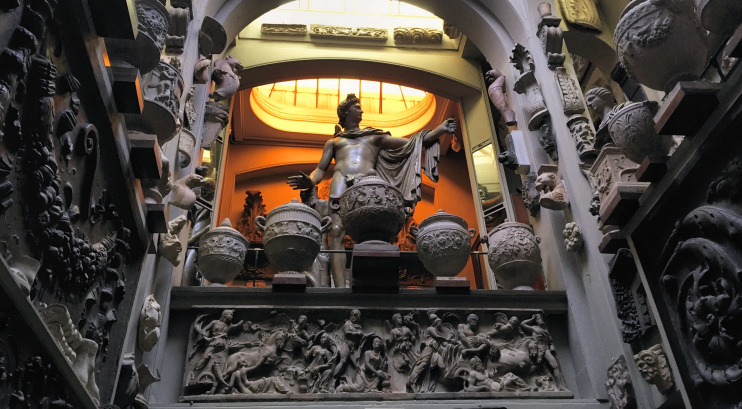Soane Museum
Sir John Soane’s House
Sir John Soane was an architect and antiquarian (1753–1837), born near Reading, Berkshire. He trained under George Dance the Younger, for whom he had first worked as an errand boy, and won Royal Academy medals for his architectural drawings. In 1777 he travelled to Italy and spent three years studying classical architecture. On his return he designed numerous public buildings, churches and country houses.
In 1788 he was appointed architect to the Bank of England and he later served as clerk of works at St James’s Palace, the Palace of Westminster and Chelsea Royal Hospital. Surviving Soane buildings in London include Bentley Priory, Dulwich Picture Gallery, Norwood Hall and Pitshanger manor house.
The Soane Museum or Sir John Soane’s House is an extraordinary collection of books and manuscripts, works of art, classical artefacts and casts and models of the remains of antiquity assembled by Sir John Soane as an ‘academy of architecture’ in the connecting houses that he designed in Lincoln’s Inn Fields.
He bequeathed the buildings and the collection to the nation because his wife and one of his sons predeceased him and he intensely disliked his surviving son. The collection includes The Rake’s Progress, a ‘moral narrative’ painted in 1733–5 by William Hogarth and subsequently made into popular engravings.
Admission is free and the museum is open from 10am to 5pm, Wednesday to Sunday and on bank holidays.
“Few people know of it, and fewer visit it, which is much to be regretted, since, though, as Dr Waagen says, the overcrowded and labyrinthine house leaves an impression as of a feverish dream, it contains, together with much rubbish, several most interesting pictures.”
Augustus Hare, Walks in London (1878)


